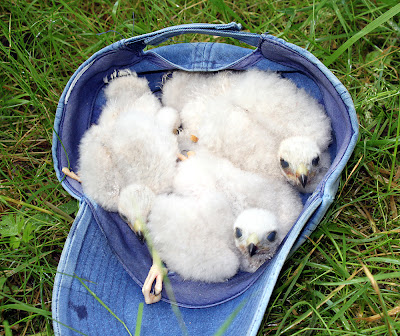The blog is back after 4 days with nothing to post. While most of the country has enjoyed 30 degree temperatures here in the North West corner we endured 4 days of 100% cloud as the rain and drizzle refused to go away. It was similar today, but I braved the grey into the hint of midday sunshine.
I drove up to Cockerham, and resisting the temptation to twitch the Conder Green Spoonbill, I went instead to check on the Sparrowhawks ringed on 9th July; by now there should be young on the edge of the nest just raring to go.
I’ve seen lots of Spoobills, mainly in Spain but a few in the UK, and as many people would perhaps agree they can be the most immobile, unexciting birds one is ever likely to see. Here’s a superb shot of a Spoonbill actually moving, what a wonderful photograph from Andreas Trepte.
Eurasian Spoonbill by Andreas Trepte - http://www.photo-natur.de/.
Back to the matter in hand, and without climbing up the tree, which could have made any occupants “explode” from the nest, from several yards away I saw just one large Sparrowhawk youngster waiting for the next meal. On 9th July there were three young of much the same size and development, so unless two were now hunkered down in the nest, only one had survived. I made my way quietly out of the wood and left the family in peace and quiet.
Sparrowhawk chick
The fields at Braides proved much quieter than my previous visit but I noted a recent trim had removed much of the cover and seed bearing rough grasses: Just 8 Linnet, 5 Goldfinch, 6 Meadow Pipit, 2 Skylark and 2 Reed Bunting today. Along and from the sea wall, 2 Pied Wagtail, 2 Grey Heron, 48 Curlew, 1 Kestrel, 1 Wheatear, with hirundines and swifts numbering 15 Swallow, 8 House Martin and 4 Swift.
Barn Swallow
Hopefully no rain tomorrow, a ringing session, followed by more news on Another Bird Blog.





































.JPG)







.jpg)











